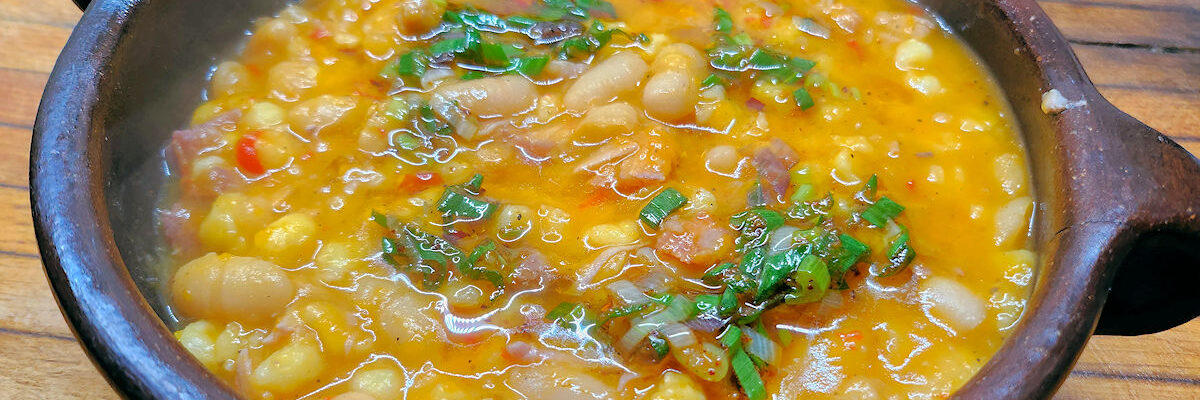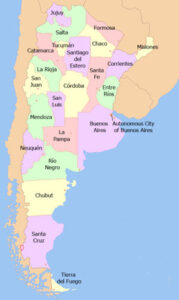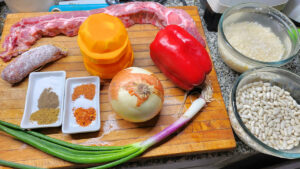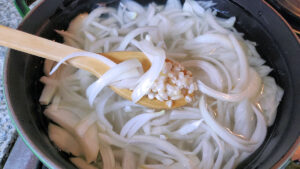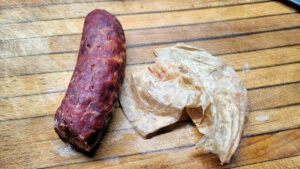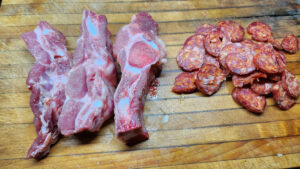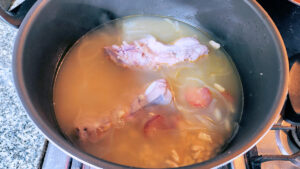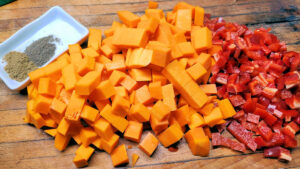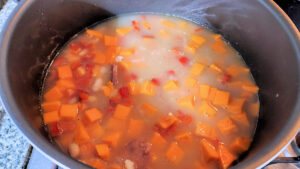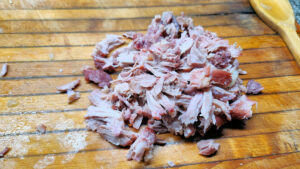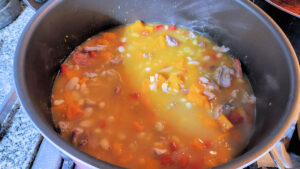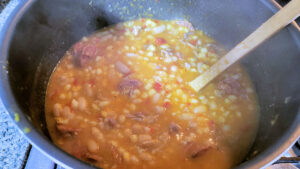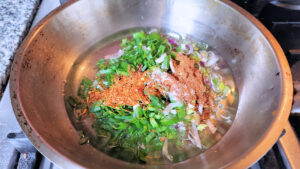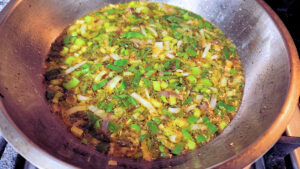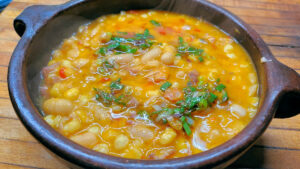It’s been a colder, wetter few days and a big pot of locro seemed in order. It was time to get back to my list of the various regional South American locros, this time, we head to northwest Argentina and the province of Catamarca (Quechua word meaning… hillside fortress).
Catamarca is the province that’s sort of salmon-colored up there in the northwest. Most of it is mountainous. Crops-wise, the region is known for its corn, paprika chilies, citrus, walnuts and wild hazelnuts (jojoba), olives, cotton, and tobacco. But, we’re there in spirit for the local version of our planned stew, a Locro catamarqueño.
Set for cooking – we have pork ribs (some people also add in beef shortribs), a cured chorizo, squash, red bell pepper, onion, cracked white corn and white beans (both presoaked), and salt, pepper, and cumin. For the “garnish”, we have chili flakes, hot paprika, salt, green onion, and off-scene, some vegetable oil.
Into a big pot of water put the sliced onions, and the soaked beans and cracked corn. Bring to a boil, turn the heat down to low, and simmer for about 20 minutes.
Peel the casing off the chorizo and slice the sausage. Cut the pork ribs into pieces that will fit in the pot. You don’t need to cut these into individual ribs, we’re going to be fishing them out and removing the meat from the bones a little later.
Add the chorizo and ribs into the pot – at this point I realized the pot I started with wasn’t going to be big enough, so I moved it all to a bigger one. Bring back to a simmer, cover and cook for an hour.
Dice the bell pepper and squash.
Remove the pieces of pork ribs from the pot, add the bell pepper, squash, and the salt, pepper, and cumin into the pot, bring back to a simmer, cover and cook for another hour.
Let the ribs cool until they’re easy to handle – maybe 10-15 minutes, and then shred the meat off the bones.
Add the meat back into the pot, cover and continue cooking the rest of that hour.
By the time that second hour is up, the squash and peppers have basically fallen apart, creating a thicker stew. Use either a wooden spoon or a potato masher and kind of coarsely mash it up to break up the pieces of squash, peppers, and the beans a bit more. Check your seasoning, I thought it needed a bit more salt.
While that’s all finishing cooking, chop up your green onion and add it, the salt, chili flakes, and hot paprika to some vegetable oil over low to medium heat. Cook until it’s sizzling and the onions are just starting to turn golden. Remove from heat and set aside.
And, ladle up a bowlful of the locro catamarqueño and garnish it with a couple of spoonfuls of the spicy green onion oil. Dig in!
There are variations on this, as there are on all these locro recipes. As I said earlier, some people also add in (or just use) beef shortribs. Just treat them the same way as the pork ribs, shredding the meat into the stew. It’s also common, though not obligatory, to add a soft, creamy cheese to the stew along with the green onion oil – some people just put some atop, others mix it in. We weren’t in the mood for cheese in the stew, so we opted not to.
